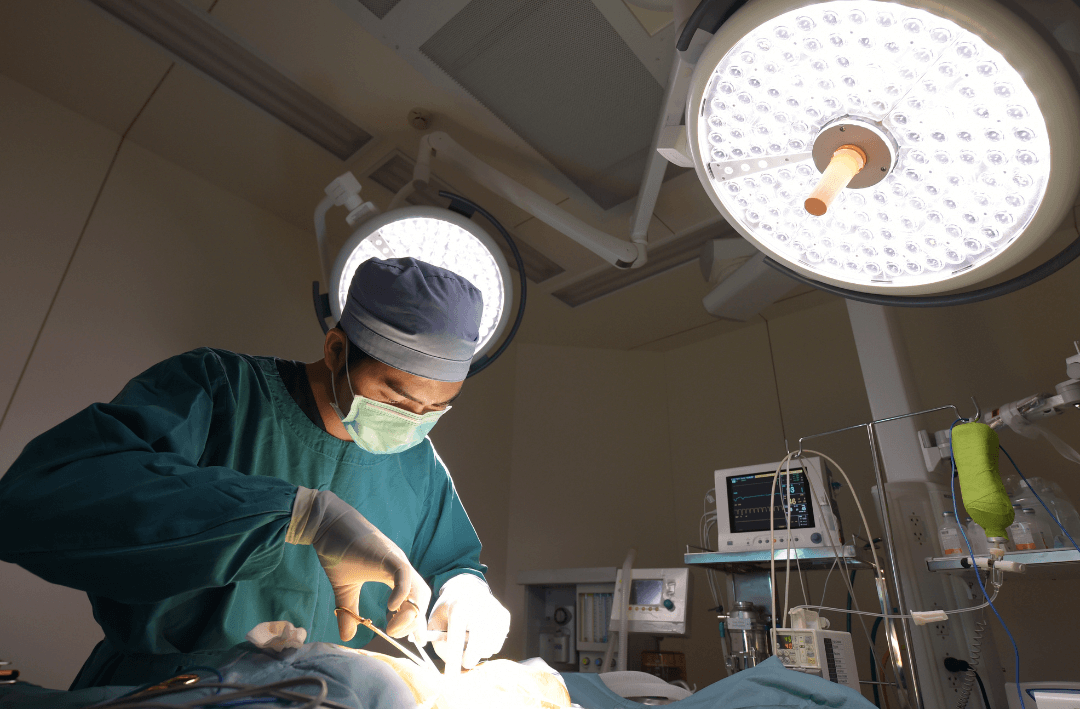Mar 14, 2024

The cranial cruciate ligament (CCL) in dogs is similar to the anterior cruciate ligament (ACL) in humans. Degeneration of the CCL and, ultimately, tearing of the ligament, is extremely common, often resulting in chronic lameness and pain. Left untreated, significant arthritis within the knee occurs. The gold-standard option for dogs with CCL disease is surgery, which restores stability and lessens arthritis severity for optimal return to function.
Several surgical procedures have been developed to treat CCL injuries, including the successful tibial plateau leveling osteotomy (TPLO). At the Animal Emergency and Specialty Center, our board-certified surgeons evaluate dogs on a case-by-case basis and may recommend TPLO surgery. You have many options for your dog’s surgery, but AESC provides a comprehensive TPLO package that supports your pet’s healing and recovery.
TPLO is a complex, highly specialized procedure that requires a skilled surgeon and an experienced surgical nursing team to ensure a successful outcome. Our board-certified surgeons have earned this status with at least four additional years of training after veterinary school. The AESC nursing team consists of certified veterinary technicians with extensive anesthesia and surgery training to assist our board-certified surgeons. Additionally, a board-certified veterinary anesthesiologist designs and oversees our anesthetic protocols. This ensures our ability to manage breed-specific anesthetic needs as well as patients with underlying liver, kidney, and heart disease.
Orthopedic surgery causes significant tissue and bone trauma, which leads to pain and inflammation. Uncontrolled pain is not only extremely uncomfortable for your pet, but also can discourage them from using the affected leg, which can impede recovery. AESC patients receive a nerve block prior to surgery in order to stop pain before it even starts. Then, at the end of surgery, patients receive a slow-release nerve pain blocker directly into the surgical site. This provides local pain relief for a few days and, combined with systemic pain and anti-inflammatory medications, gets your pet back on their feet faster.
Our operating facilities are designed to accommodate advanced surgical procedures. We use the latest technology for your pet’s orthopedic surgery, including high quality, locking implants, and arthroscopy. Additionally, our operating rooms (ORs) are stocked with superior anesthetic monitoring equipment, so our anesthesia team has the information they need to keep your pet safe.
After TPLO surgery, patients spend the night in our 24-hour hospital with veterinarian-led monitoring, pain control, and nursing care. Although postoperative complications are rare, staying in the hospital ensures we can intervene quickly if a problem should arise. Our team also provides several initial rehabilitation therapies proven to reduce pain, inflammation, and recovery time, including:
Once anesthesia has completely worn off, we’ll encourage your pet to stand up and move around, with our nursing team’s help. After leaving the hospital and heading home, your pet will require oral medications for continued pain control and to reduce the risk of surgical site infections.
At discharge, you will be sent home with detailed instructions for at-home rehabilitation exercises during each recovery phase. The first few weeks require strict rest, then controlled activity will be progressively increased to rebuild joint and muscle strength. A gradual increase in activity is crucial to prevent too much stress being placed on the bone before healing is complete.
To facilitate this recovery, our TPLO surgery package includes several follow-up visits. The first is a consultation with our rehabilitation specialist, who can create a customized rehabilitation plan. The second is our eight-week follow-up with the surgeon to check radiographs (X-rays) and evaluate progress. Our surgery and rehabilitation teams work together closely to provide the best possible outcomes for TPLO patients and guide clients through the recovery process.
Rehabilitation treatments that may be recommended for your pet and performed in our rehab department include:
If your pet requires TPLO surgery to repair a torn CCL, ensure you research available facilities before booking your appointment so you know what you are getting for your money. Having a team of specialists adds tremendous value and ensures your pet receives the best care possible. Schedule a consultation with our Animal Emergency and Specialty Center to discuss what’s included in our surgery packages and the steps we take to help ensure your pet has an optimal outcome and quick return to function.